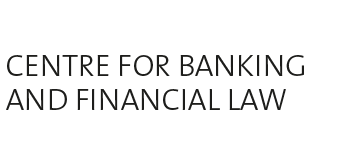Financial regulations
Overview of sustainable finance law

Jeremy Bacharach
(Translated by DeepL)
The world of sustainable finance seems to be in a constant state of flux. New products, neologisms and acronyms follow one another at a pace that can make your head spin. On October 12 alone – by way of example – the G7 expressed its support for a whole series of international initiatives in this field, and the Swiss Confederation issued its first “green” bond. Legal and regulatory news is no exception to this effervescence, and there are already dozens of regulations, reports and other texts that – fortunately for the Earth, but unfortunately for lawyers – now abound. The purpose of this commentary is to take a step back, and try to draw up as concise an overview as possible of the regulatory aspects of sustainable finance, in the hope of finding our way through this increasingly dense field.
Four categories of sustainable finance rules have emerged :
Transparency and disclosure rules. These require certain companies to publish information on the environmental impact of their activities, the environmental risks they face, and how they are approaching the ecological transition. The companies subject to these regulations are generally listed on the stock exchange, companies that exceed certain thresholds, or financial institutions. In Switzerland, these include CO 964a ff, and, for banks and insurance companies, the recently amended FINMA circulars 2016/1 and 2016/2 (commented in cdbf.ch/1191/). In European law, Regulation 2019/2088 (SFDR) imposes similar obligations on financial market players, and a directive on corporate sustainability reporting (CSRD) will soon reinforce the already existing requirements of Directive 2013/34/EU. In the United States, the SEC intends to follow the same path.
Nomenclature and taxonomy rules, which define the activities that can be qualified as “green” and presented as such to investors. One of the aims of these rules is to prevent greenwashing, i.e. the false or misleading assertion that certain investments are sustainable. Often, these regulations also include transparency and publication obligations as a consequence of the reference to sustainability. In Swiss law, we find the FINMA Communication on supervision 05/2021 (commented in cdbf.ch/1205/) and the AMAS self-regulation for collective assets referring to sustainability (commented in cdbf.ch/1248/). The most striking example, however, is the European “taxonomy” regulation. The SEC is also looking into this, in the context of a review of the rules governing the naming of collective investments.
Financial services rules, which govern how environmental issues are to be taken into account at the point of sale. In this area, Switzerland is only at the stage of free self-regulation, in the form of a directive issued by the Swiss Bankers Association on the integration of ESG criteria in investment advice and asset management (commented in cdbf.ch/1241/). Here again, the European Union is acting as a pioneer, as the European Commission has already amended a number of delegated acts – relating, in particular, to MiFID II – along these lines.
Finally, we are slowly seeing the emergence of substantive rules whereby certain financial market players should actively direct their investments towards sustainable activities and encourage their customers’ ecological transition. While the foregoing rules are essentially “formal” in scope, regulations of this type are “material” in the sense that they directly influence the allocation and use of financial resources. The first “breakthrough” in this area is the controversial draft Directive on corporate sustainability due diligence, now submitted by the Commission to the European legislative bodies.
As can be seen, the regulation of sustainable finance still leaves much to self-regulation. This is true both in Switzerland and internationally, with voluntary groups such as the Glasgow Financial Alliance for Net Zero, as well as international standards such as the recommendations of the Task Force on Climate-Related Financial Disclosures (TFCD) and those – still in preparation, but already eagerly awaited – of the International Sustainability Standards Board. In this area, however, the distinction between regulation and self-regulation can become blurred. Authorities can publish and promote purely voluntary, non-binding conceptual frameworks, such as the Swiss Climate Scores. Conversely, regulations can refer to self-regulatory texts. A draft ordinance on climate reporting, for example, stipulates that the companies concerned may implement their obligations under Art. 964a ff. of the Swiss Code of Obligations by applying the recommendations of the TFCD. While self-regulation has always played an important role in Swiss financial regulation, the strategy of incorporating international standards into Swiss law by simple reference is less tried and tested, and should therefore be handled with caution, as many of the comments received during the consultation process made clear.




